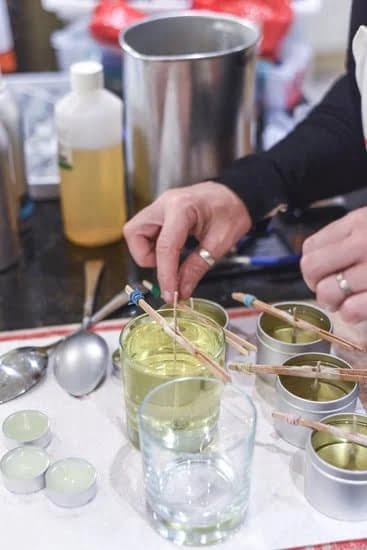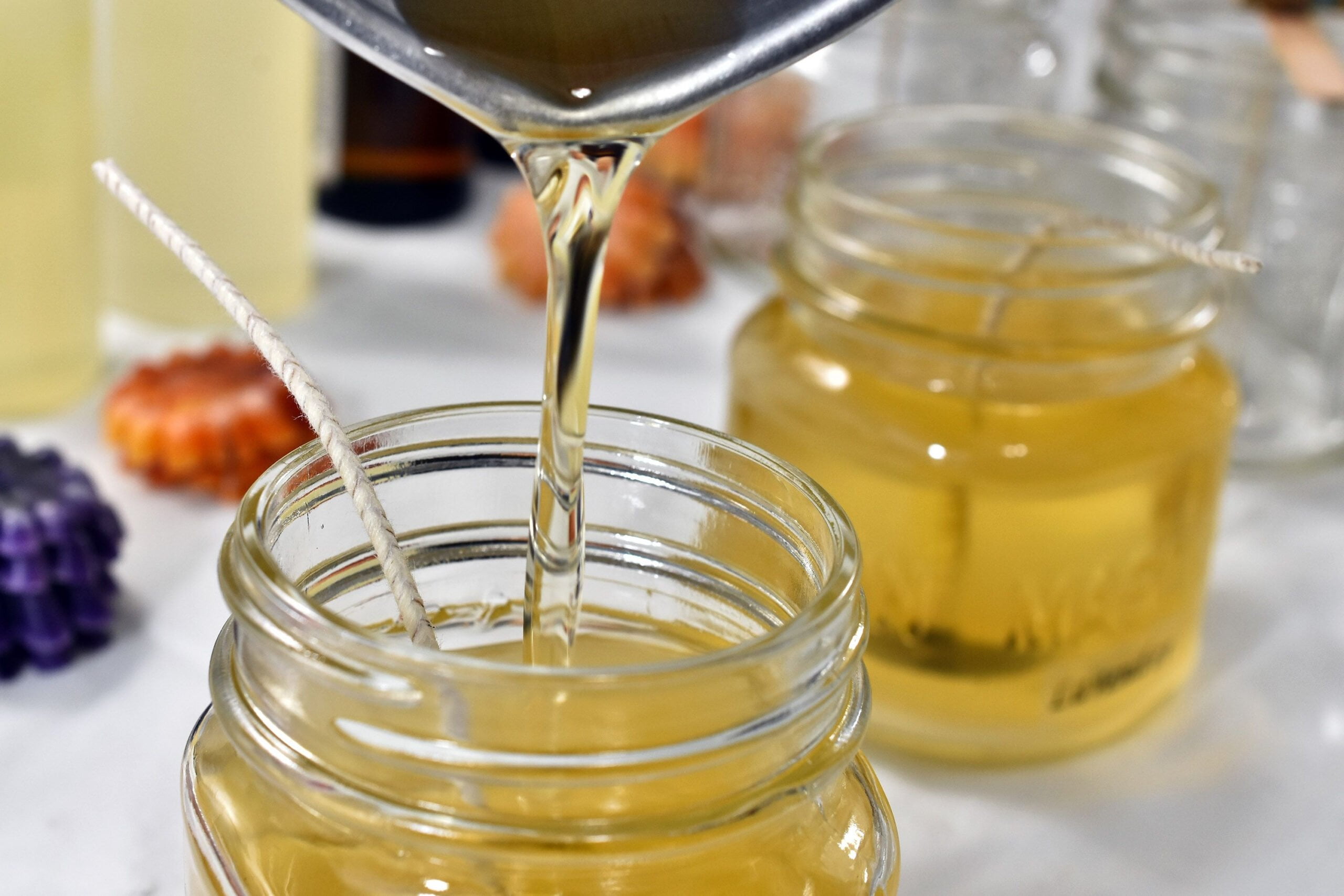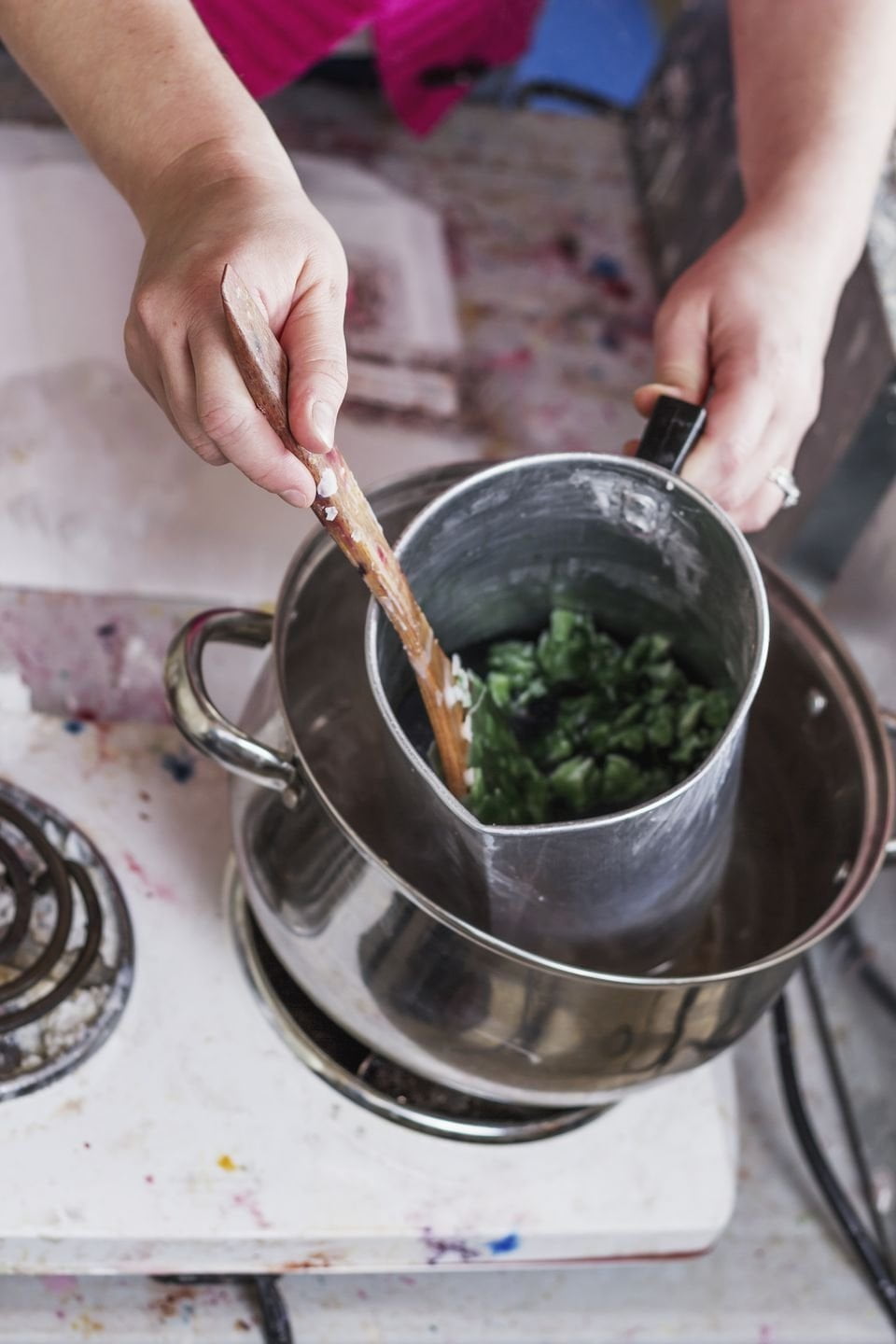Are you interested in learning how to make your own candles using soy wax? Look no further. In this article, we will provide you with a step-by-step candle making recipe using soy wax, as well as essential tips and creative ideas for successful candle making. Whether you’re a beginner or an experienced crafter, this comprehensive guide will help you create beautiful soy wax candles right at home.
Soy wax candle making has gained popularity in recent years due to its natural and sustainable properties. By using soy wax, you can enjoy clean-burning candles that are eco-friendly and free from harmful chemicals. In this article, we will explore the benefits of using soy wax for candle making and why it has become a preferred choice for many crafters.
Before diving into the step-by-step candle making recipe, it’s important to understand the essentials for making soy wax candles. From choosing the right wicks and containers to mastering the art of pouring and setting, we’ll cover everything you need to know to get started with your soy wax candle making journey. So, grab your supplies and let’s get started on creating your very own handcrafted soy wax candles.
Benefits of Using Soy Wax for Candle Making
Soy wax has gained popularity among candle makers due to its numerous benefits. This natural and renewable substance offers several advantages over traditional paraffin wax, making it a top choice for those who are conscious about the environment and seeking a cleaner, healthier alternative for their candles.
Environmental Benefits
One of the key benefits of using soy wax for candle making is its eco-friendliness. Unlike paraffin wax, which is derived from petroleum, soy wax is made from soybean oil, a sustainable and biodegradable resource. Choosing soy wax candles helps reduce the demand for non-renewable resources and minimizes the carbon footprint associated with candle production.
Health Benefits
Another advantage of soy wax candles is their clean-burning nature. When lit, soy wax candles emit less soot compared to paraffin candles, resulting in improved indoor air quality. Additionally, soy wax does not release harmful toxins or chemicals when burned, making it a healthier option for individuals with sensitivities to artificial fragrances or air pollutants.
Aesthetic Benefits
Soy wax also offers aesthetic benefits for candle makers and consumers alike. It has a lower melting point than paraffin wax, which means that soy wax candles burn slower and last longer. Furthermore, soy wax has a natural creamy color that can easily be dyed to create custom-colored candles. Its ability to hold fragrance oils exceptionally well also makes it an ideal choice for creating beautifully scented candles.
Essentials for Making Soy Wax Candles
When it comes to making soy wax candles, there are a few essential items and ingredients that you will need to have on hand. Here is a list of the essentials for making soy wax candles:
1. Soy Wax: Of course, the most important ingredient for making soy wax candles is the soy wax itself. Make sure to choose a high-quality soy wax that is specifically designed for candle making.
2. Candle Wicks: The wick is what allows the candle to burn, so make sure you have the appropriate size and type of wick for your candle size and shape.
3. Fragrance Oils or Essential Oils: If you want scented candles, you will need fragrance oils or essential oils to add a pleasant aroma to your soy wax candles.
4. Double Boiler or Melting Pot: To melt the soy wax, you will need a double boiler or melting pot specifically designated for candle making. This will ensure that the wax melts evenly and safely.
5. Thermometer: It’s essential to have a thermometer on hand to monitor the temperature of the melted soy wax. This will help prevent any issues with burning or poor scent throw in your finished candles.
In addition to these essentials, you may also want to consider other optional supplies such as colorants, molds, and heat-resistant containers for pouring your melted soy wax into. By ensuring you have all of these essentials on hand, you can set yourself up for successful and enjoyable soy wax candle making experience.
Step-by-Step Candle Making Recipe With Soy Wax
Gathering Your Materials
Before you begin making soy wax candles, it’s important to gather all the necessary materials. You will need soy wax flakes, a double boiler or a heat-safe container for melting the wax, a thermometer, fragrance oils or essential oils, candle wicks, containers for the candles, and a stirring utensil. It’s also helpful to have a scale to measure out your ingredients accurately.
Melting the Soy Wax
The first step in the candle making recipe with soy wax is melting the wax. Using a double boiler or a heat-safe container set in a pot of water, melt the soy wax flakes over low to medium heat. It’s important to monitor the temperature of the wax using a thermometer and to never leave it unattended while melting.
Adding Fragrance and Pouring the Candles
Once the soy wax has melted completely and reached its optimal temperature, it’s time to add fragrance oils or essential oils. The amount of fragrance you add will depend on your personal preference and the size of your candle. After thoroughly mixing in the fragrance, carefully pour the wax into your chosen containers. Be sure to center the candle wicks while pouring and secure them in place so they remain upright as the candles cool.
By following this simple candle making recipe with soy wax, you can create beautiful and fragrant candles that are perfect for gifting or enjoying in your own home.
Choosing the Right Fragrance for Soy Wax Candles
When it comes to making soy wax candles, choosing the right fragrance is an essential step in creating a high-quality product. The fragrance of a candle can set the mood and ambiance for any room, making it an important factor to consider. When selecting a fragrance for your soy wax candles, there are a few things to keep in mind.
First and foremost, consider the purpose of the candle and the space in which it will be used. For example, if you are making candles for relaxation and meditation, you may want to choose calming scents such as lavender or chamomile. On the other hand, if the candles are intended for a living area or kitchen, fresh and invigorating scents like citrus or herbal fragrances may be more appropriate.
Another consideration when choosing a fragrance for soy wax candles is whether to use essential oils or synthetic fragrances. Essential oils are natural plant extracts that offer therapeutic benefits and create a cleaner burn. Synthetic fragrances, on the other hand, can offer a wider variety of scents at a lower cost. It is important to weigh the benefits of each option and consider any potential sensitivities or allergies of those who will be using the candles.
In addition to considering the purpose and type of scent, it is also important to test different fragrances before production on a large scale. This will allow you to determine how well the scent performs in soy wax and how strong it will be when the candle is burned. By carefully selecting your fragrance based on these factors, you can ensure that your soy wax candles not only look beautiful but also fill any space with delightful aromas.
Tips for Safe and Successful Soy Wax Candle Making
When it comes to making soy wax candles, safety should always be a top priority. Working with hot wax and fragrances can pose certain risks, but by following some simple guidelines, you can ensure a safe and successful candle making experience.
First and foremost, it’s important to work in a well-ventilated area to prevent the build-up of fumes from the melting wax and fragrance oils. This will help to minimize the risk of respiratory irritation and other health issues. Additionally, be sure to use proper protective equipment such as heat-resistant gloves and goggles to protect your skin and eyes from potential splashes or spills.
Another key tip for safe soy wax candle making is to never leave your melting wax unattended. It’s crucial to keep a close eye on the melting process at all times to prevent any accidental fires or burns. In the event of a small wax spill or flame flare-up, having a fire extinguisher or baking soda on hand can help quickly address the situation before it escalates.
Lastly, it’s essential to educate yourself on the proper handling and storage of fragrance oils and dyes used in candle making. Some ingredients may have specific storage requirements to maintain their quality and potency, so be sure to carefully read all product labels and instructions before use.
| Tip | Details |
|---|---|
| Work in a well-ventilated area | Minimize fume exposure for respiratory health |
| Use proper protective equipment | Prevent skin and eye injuries from splashes or spills |
| Never leave melting wax unattended | Avoid potential fires or burns |
Troubleshooting Common Issues in Soy Wax Candle Making
Soy wax candle making can be a fun and rewarding hobby, but it’s not without its challenges. Even with the best preparation and attention to detail, issues can arise that may affect the quality of your candles. Here are some common problems that candle makers encounter when working with soy wax, along with some troubleshooting tips:
1. Sinking or Fracturing: Sometimes, soy wax candles can develop sinkholes or fractures on the surface as they cool. This can be caused by a few different factors, such as pouring the wax at too high of a temperature or not allowing it to cool slowly enough. To prevent this issue, make sure to pour your wax at the recommended temperature and avoid sudden temperature changes during the cooling process.
2. Wet Spots: Wet spots are areas on the surface of a soy wax candle that appear to be lighter or “wet” in appearance. These spots occur when the wax doesn’t adhere properly to the glass container, often due to temperature fluctuations during cooling. To minimize wet spots, try preheating your containers before pouring the wax and then allowing the candles to cool slowly in a draft-free environment.
3. Tunneling: Tunneling happens when a soy wax candle burns down the center, leaving behind a thick “tunnel” of unmelted wax around the wick. This is often caused by not allowing the candle to burn long enough during its initial use or placing it in a drafty area. To avoid tunneling, make sure to burn your candles for at least one hour per inch of diameter each time you light them and keep them away from drafts.
By being aware of these common issues and following these troubleshooting tips, you can improve your skills as a soy wax candle maker and create beautiful, high-quality candles every time. Remember that practice makes perfect, so don’t get discouraged if you encounter a problem – just keep experimenting and learning from each batch of candles you make.
Creative Ideas for Decorating and Packaging Soy Wax Candles
Decorating and packaging soy wax candles can be just as fun as making them. By putting some extra effort into the presentation of your candles, you can increase their aesthetic appeal and make them more appealing to potential buyers or gift recipients. Here are a few creative ideas for decorating and packaging your soy wax candles:
First, consider adding a personal touch by creating custom labels for your candles. You can include the scent, ingredients used, and any special messages or branding. This not only makes your candles look more professional but also adds a unique and personal element to each one.
Another idea is to consider the container in which you pour your soy wax. Mason jars, vintage teacups, or even recycled tins can add an interesting and unique flair to your candles. Make sure to clean and decorate the containers before pouring the wax for a polished final product.
When it comes to packaging your soy wax candles, think about using eco-friendly materials such as kraft paper or biodegradable cellophane. You can also incorporate natural elements like twine, dried flowers, or leaves for a rustic and charming look.
By taking the time to decorate and package your soy wax candles thoughtfully, you can enhance their overall appeal and create a more cohesive brand image if you’re planning on selling them. Plus, it’s an enjoyable way to express your creativity while adding value to your candle-making endeavor.
| Idea | Description |
|---|---|
| Custom Labels | Create personalized labels for each candle with scent information and special branding. |
| Unique Containers | Use unconventional containers such as mason jars or vintage teacups for added visual interest. |
| Eco-Friendly Packaging | Consider using sustainable materials like kraft paper or biodegradable cellophane for packaging. |
Conclusion
In conclusion, venturing into the world of soy wax candle making can be a rewarding and fulfilling experience. By using soy wax, you are not only creating a healthier and eco-friendly product, but also enjoying countless benefits such as longer burn time, cleaner burning, and a stronger fragrance throw. Whether you are making candles for personal use or as a potential business venture, the options for creativity and customization are endless.
Following the step-by-step candle making recipe with soy wax outlined in this article, along with the tips for safe and successful candle making, will ensure that your final product is of high quality. Additionally, selecting the right fragrance for your soy wax candles is crucial in creating an enticing and pleasant aroma that will enhance any space.
As you embark on your journey to becoming a soy wax candle maker, don’t forget to tap into your creativity when it comes to decorating and packaging your finished products. This will not only add to the overall appeal of your candles but also make them unique and attractive to potential customers if you decide to sell them.
So go ahead and enjoy the fruits of your soy wax candle making labor – whether it be by gifting them to loved ones or simply basking in the warm glow of your own handcrafted creations.
Frequently Asked Questions
What Is the Ratio of Soy Wax to Candles?
The ratio of soy wax to candles typically ranges from 1:1 to 1:2, depending on the desired consistency and fragrance strength. It is important to follow a specific recipe to ensure the best results.
What Is the Recipe for Candle-Making Soy Wax?
The recipe for candle-making using soy wax often includes melting the wax, adding fragrance or essential oils, and then pouring it into containers with wicks. Some recipes also incorporate colorants or additives for specific effects.
What Are the Negatives for Using Soy Wax to Make Candles?
While soy wax has many benefits, there are some potential negatives to consider when using it for candle-making. These may include issues with frosting, scent throw, and a softer consistency compared to other types of waxes like paraffin or beeswax. Additionally, soy wax can be more expensive than other options on the market.

Welcome to my candle making blog! In this blog, I will be sharing my tips and tricks for making candles. I will also be sharing some of my favorite recipes.





